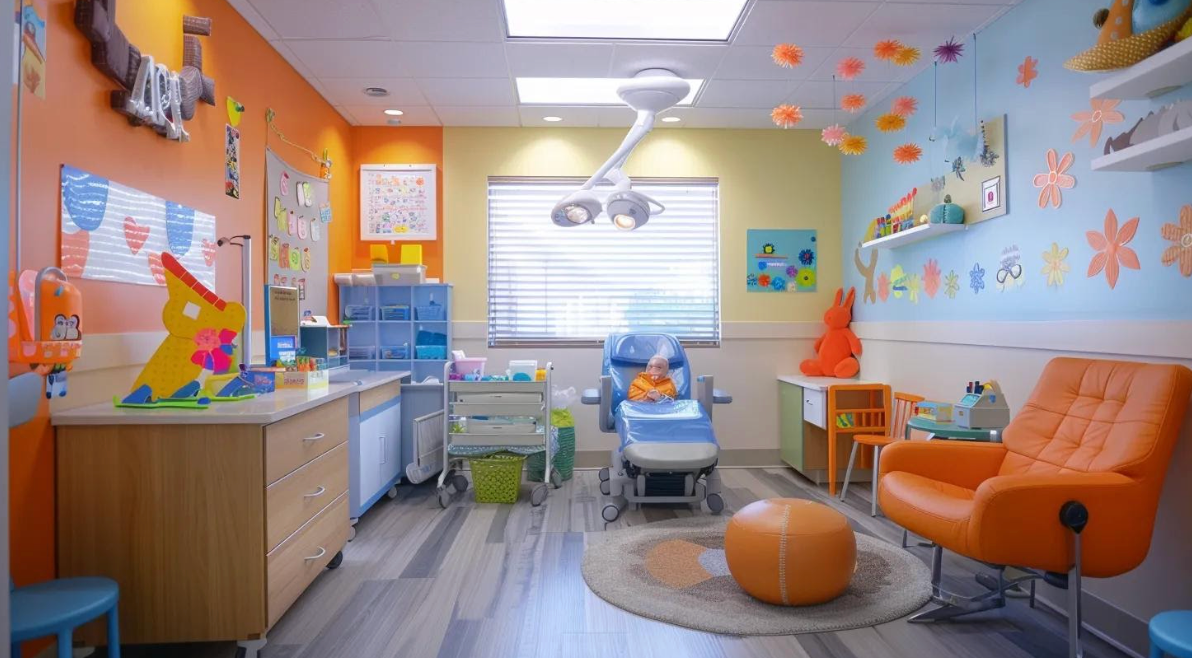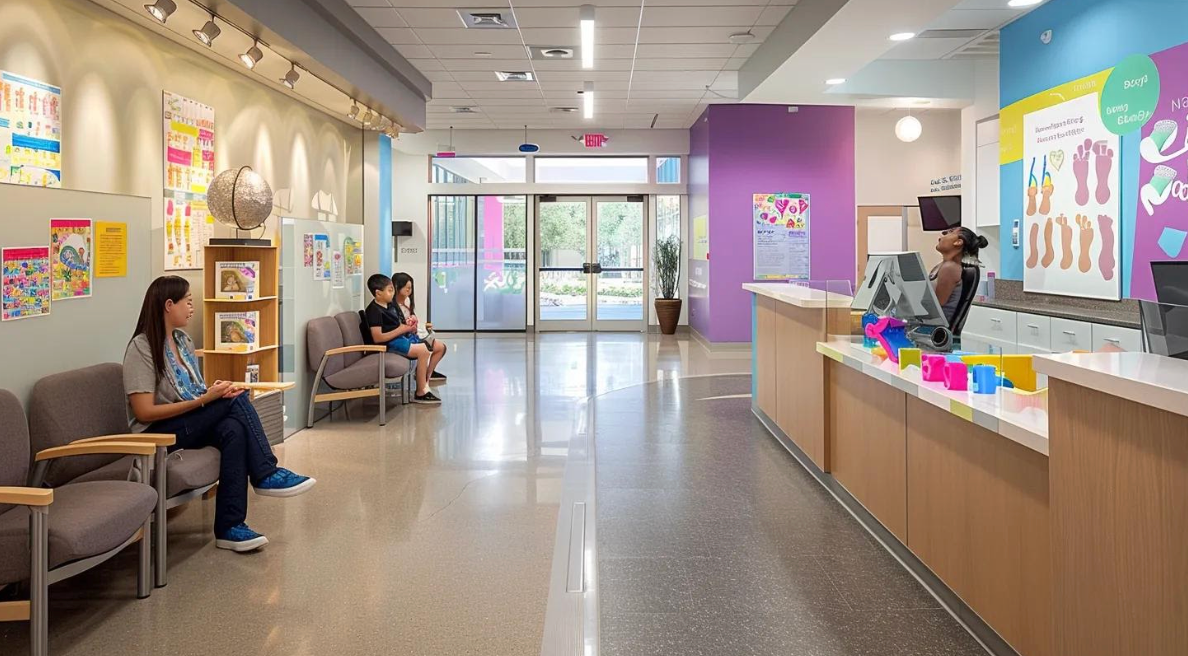What to Expect From Pediatric Foot Care Specialists
This is a subtitle for your new post

Introduction
Pediatric foot care specialists, including a
podiatrist for kids, diagnose and treat children’s foot and lower limb conditions. Their expert assessments help identify early issues that may affect mobility and overall health. This article outlines the specialist’s roles, common conditions they treat, and when parents should seek help, noting that consulting a podiatrist for kids can be crucial. It also reviews treatment options and preventive strategies, emphasizing how a child-friendly, specialized approach can lead to improved long-term outcomes and quality of life.
Key Takeaways
- Pediatric foot care specialists address a range of foot and ankle problems in children.
- Early intervention ensures proper foot development and prevents later complications.
- Treatment options include orthotics, physical therapy, casting, and, in some cases, surgery.
- A supportive, child-friendly environment improves diagnostic accuracy and treatment.
- Parents play a key role through proper footwear, home care, and regular check-ups.
What Does a Pediatric Foot Care Specialist Do?
A pediatric foot care specialist focuses on diagnosing and managing foot and lower limb conditions in children. They evaluate biomechanical and growth-related issues through physical examinations and modern imaging techniques. Using both non-invasive and surgical treatments when needed, these specialists work closely with families to offer preventive advice and lifestyle adjustments that promote healthy foot development.
Which Foot and Ankle Conditions Do They Treat in Children?
They treat conditions ranging from congenital issues to injuries related to active lifestyles. Common problems include flat feet, sports-related sprains, clubfoot, ingrown toenails, and neuromuscular disorders affecting
gait. Treatment regimens are customized based on the child’s age and developmental stage, and early intervention helps prevent long-term complications.
How Do Specialists Diagnose Pediatric Foot Problems?
Diagnosis involves a comprehensive evaluation that combines physical exams with imaging methods such as X-rays, MRI, or ultrasound. Techniques like
gait analysis and pressure mapping help assess
arch formation and foot function. This thorough approach ensures that each child’s treatment plan is precisely tailored to their needs.
What Services and Treatments Are Offered by Pediatric Foot Care Specialists?
Services range from conservative treatments to surgical interventions. Custom orthotics support proper
arch alignment; physical
therapy helps strengthen muscles and improve balance; and casting or bracing can correct misalignments. In severe cases, minimally invasive
surgery may be recommended. Specialists also guide parents on proper footwear choices and effective home exercises to maintain foot health.
What Are the Most Common Foot Conditions in Children?

Common issues include flat feet, ingrown toenails, Sever’s disease, and various developmental abnormalities. Left untreated, such conditions can impair mobility and affect overall quality of life. Recognizing symptoms early allows for prompt interventions that lessen the risk of more serious complications during adolescence or later in life.
What Causes Flat Feet in Children and How Is It Treated?
Flat feet often occur during early developmental stages before the
arch fully forms or may be due to genetic factors. While the
arch usually develops with time, persistent flat feet can result in discomfort. Treatment typically involves supportive footwear, custom orthotics, and exercises designed to strengthen the foot muscles. In severe cases, casting or occasional surgical intervention may be considered.
How Can Ingrown Toenails Affect Your Child’s Foot Health?
Ingrown toenails, common in children due to improper nail trimming or tight shoes, can cause pain and inflammation. They may lead to infections if not treated properly. Pediatric podiatrists usually recommend proper nail care, warm soaks, and topical treatments. For recurring or severe cases, minor surgical correction might be necessary.
What Is Sever’s Disease and How Is Heel Pain Managed?
Sever’s disease is an overuse injury that causes inflammation at the
heel’s growth plate, typically during growth spurts. Children may experience
heel pain and difficulty walking during physical activity. Management includes rest, ice application, and supportive footwear or
heel cushions. Physical
therapy can help strengthen surrounding muscles and reduce the risk of recurrence.
Which Other Pediatric Foot Conditions Should Parents Know About?
Other conditions include pediatric bunions, toe deformities like hammertoe, and flatfoot syndrome. In cases such as
tarsal coalition, where foot bones fuse too early, early intervention is crucial to avoid chronic pain and
gait abnormalities. Most conditions are initially managed with non-invasive treatments, reserving
surgery for more severe structural problems.
When Should You Take Your Child to a Pediatric Foot Care Specialist?
Parents should seek a pediatric foot care specialist if they notice irregularities in their child’s
gait or foot structure, especially if accompanied by pain, swelling, or difficulty walking. Early evaluation distinguishes normal developmental variations from conditions requiring treatment, ensuring timely and effective intervention.
What Are the Warning Signs of Foot and Ankle Problems in Children?
Warning signs include persistent pain, misaligned toes, flat feet, and noticeable changes in walking patterns. Swelling, redness, or discomfort during physical activities may also signal underlying issues. Early detection through regular check-ups can help keep minor issues from developing into chronic problems.
How Does Early Intervention Benefit Your Child’s Foot Health?
Early intervention enables correction of developmental issues before they lead to chronic pain or further orthopedic complications. Addressing problems during critical growth phases increases long-term mobility and prevents compensatory issues in the knees, hips, or back, helping children develop a strong, pain-free
gait.
How to Choose the Right Pediatric Foot Care Specialist for Your Child?
Choosing the right specialist involves reviewing credentials, recommendations, and experience with pediatric foot conditions. A good
pediatric podiatrist uses advanced diagnostic tools and creates a comfortable, child-friendly environment. Clear communication and a collaborative approach with parents are essential for successful treatment and compliance.
What Treatment Options Are Available for Pediatric Foot Conditions?

Treatment options depend on the condition’s severity and the child’s needs. First-line interventions are usually non-invasive, including orthotic devices, physical therapy, and lifestyle modifications. When these measures are not sufficient, minimally invasive procedures or surgery may be performed by specialists to correct severe structural abnormalities.
How Do Orthotics Help Children With Foot Problems?
Orthotics offer critical support by redistributing pressure and enhancing biomechanical function. Custom-fitted devices address issues such as flat feet, overpronation, or high arches, significantly reducing pain and improving overall foot function to allow active participation in daily activities.
When Is Physical Therapy Recommended for Pediatric Foot and Ankle Care?
Physical
therapy is advised when muscle strength, flexibility, or balance deficits are present. It involves structured exercise programs, stretching, and balance training to rehabilitate injured tissues and improve overall limb function. This
therapy is often integral to recovery from conditions like Sever’s disease or post-surgical rehabilitation.
What Surgical Treatments Are Available for Complex Foot Conditions?
If conservative treatments fail,
surgery may be necessary to realign bones, lengthen tendons, or fuse joints. Pediatric orthopedic surgeons work with podiatrists to select the most effective surgical approach based on the specific deformity, always considering the least invasive option to reduce recovery time and risks.
How Are Casting and Bracing Used in Pediatric Foot Care?
Casting and bracing are used to immobilize and correct misalignments during the healing process. These methods gradually adjust the foot’s structure by applying controlled pressure, making them effective in conditions like clubfoot and in post-injury recovery.
How Can Parents Prevent Foot Problems and Support Healthy Foot Development?
Prevention at home is crucial. Parents can help by ensuring children wear well-fitted shoes, maintain proper foot hygiene, and engage in regular physical activity. Routine inspections for signs of pressure points, along with periodic professional check-ups, support early detection and intervention, reducing the need for more intensive treatments later.
What Are the Best Shoes for Children’s Growing Feet?
The best shoes provide proper
arch support, cushioning, and enough room for toe movement. Brands focusing on pediatric biomechanics design shoes that adapt to a child’s changing foot shape. Breathable materials and flexible soles promote natural foot motion and proper alignment.
How Can You Promote Proper Foot Development at Home?
Encouraging barefoot play on safe surfaces can naturally strengthen foot muscles. Regular stretching, balance tasks, and monitoring for abnormalities are simple yet effective ways to support proper foot development as part of daily routines.
What Lifestyle Changes Help Prevent Common Pediatric Foot Issues?
A balanced diet rich in calcium and vitamin D contributes to healthy bone development, while regular physical activity keeps the musculoskeletal system strong. Limiting sedentary behavior and avoiding overly restrictive footwear during growth spurts can further minimize the risk of developing structural problems.
Why Is a Child-Friendly Environment Important in Pediatric Foot Care?

A welcoming and child-friendly clinical environment reduces anxiety and encourages cooperation during examinations and treatments. Clinics with vibrant decor and play areas help make visits less intimidating, facilitating smoother diagnostic and treatment processes, which in turn enhance overall outcomes.
How Do Specialists Create Comfortable Experiences for Children?
Specialists use gentle communication, age-appropriate explanations, and a friendly atmosphere to create a comforting experience. Distractions such as toys or interactive screens can keep children calm, making procedures more efficient and easing concerns for both the child and their parents.
What Role Does Parent Education Play in Pediatric Foot Care?
Educating parents on proper foot care, shoe fitting, and preventive strategies is vital. Informed parents can better support their child’s long-term foot health by recognizing early warning signs and adhering to recommended care routines at home.
How Does Advanced Technology Improve Pediatric Foot Care?
Modern technology improves both the diagnosis and treatment of pediatric foot conditions. Digital
gait analysis, 3D foot scanning, and minimally invasive surgical techniques allow for precise treatment planning and management, leading to better outcomes and faster recovery for young patients.
What Diagnostic Tools Are Used for Accurate Pediatric Foot Assessments?
High-resolution X-rays, MRI scans, and dynamic
gait analysis help specialists observe foot movement and structure in detail. Pressure mapping systems further assist in identifying subtle discrepancies in weight distribution, ensuring that each child’s treatment is customized for optimal results.
How Do Minimally Invasive Treatments Benefit Children?
Techniques such as arthroscopy or image-guided injections lower the risk of complications and reduce recovery time. These methods minimize discomfort, enabling children to resume normal activities sooner while preserving long-term foot function.
How Can Parents Prevent Foot Problems and Support Healthy Foot Development?
Regular check-ups and home care are key. Parents should promote activities that build foot strength and ensure proper shoe fit. By instilling good habits early—such as checking for discomfort and practicing simple exercises—parents can help maintain healthy, well-developed feet.
Final Thoughts
Pediatric foot care specialists play a vital role in ensuring children develop healthy, pain-free feet. Their expertise—from diagnosing common conditions like flat feet and ingrown toenails to managing severe deformities—combined with modern technology and a child-friendly environment, helps prevent long-term issues. With proactive care and regular check-ups, parents can support their child’s mobility, comfort, and overall quality of life.
Frequently Asked Questions
Q: When should parents first consider consulting a pediatric foot care specialist? A: Parents should consult a specialist as soon as any irregularities in gait, persistent pain, or visible deformities are observed.
Q: Are custom orthotics effective for managing pediatric flat feet? A: Yes, custom orthotics support proper alignment and redistribute pressure, helping to reduce pain and improve gait.
Q: How do minimally invasive treatments benefit children compared to traditional surgery? A: Minimally invasive techniques decrease recovery time and reduce discomfort, ensuring quicker returns to normal activities.
Q: What preventive measures can parents take to support healthy foot development? A: Parents should ensure proper footwear, encourage regular exercise, and schedule routine check-ups to catch problems early.
Q: How does advanced technology improve the diagnostic process in pediatric podiatry? A: Digital imaging and gait analysis provide highly accurate assessments, allowing specialists to create tailored treatment plans for each child.
Table: Comparison of Treatment Options in Pediatric Foot Care
| Treatment Option | Primary Function | Typical Benefit | Example Condition |
|---|---|---|---|
| Custom Orthotics | Corrects alignment and supports structure | Reduces pain and improves gait | Flat feet, overpronatio |
| Physical Therapy | Enhances strength, flexibility, and balance | Accelerates recovery and improves mobility | Post-injury rehabilitation |
| Minimally Invasive Surgery | Corrects severe structural abnormalities | Reduces recovery time and minimizes risks | Tarsal coalition |







